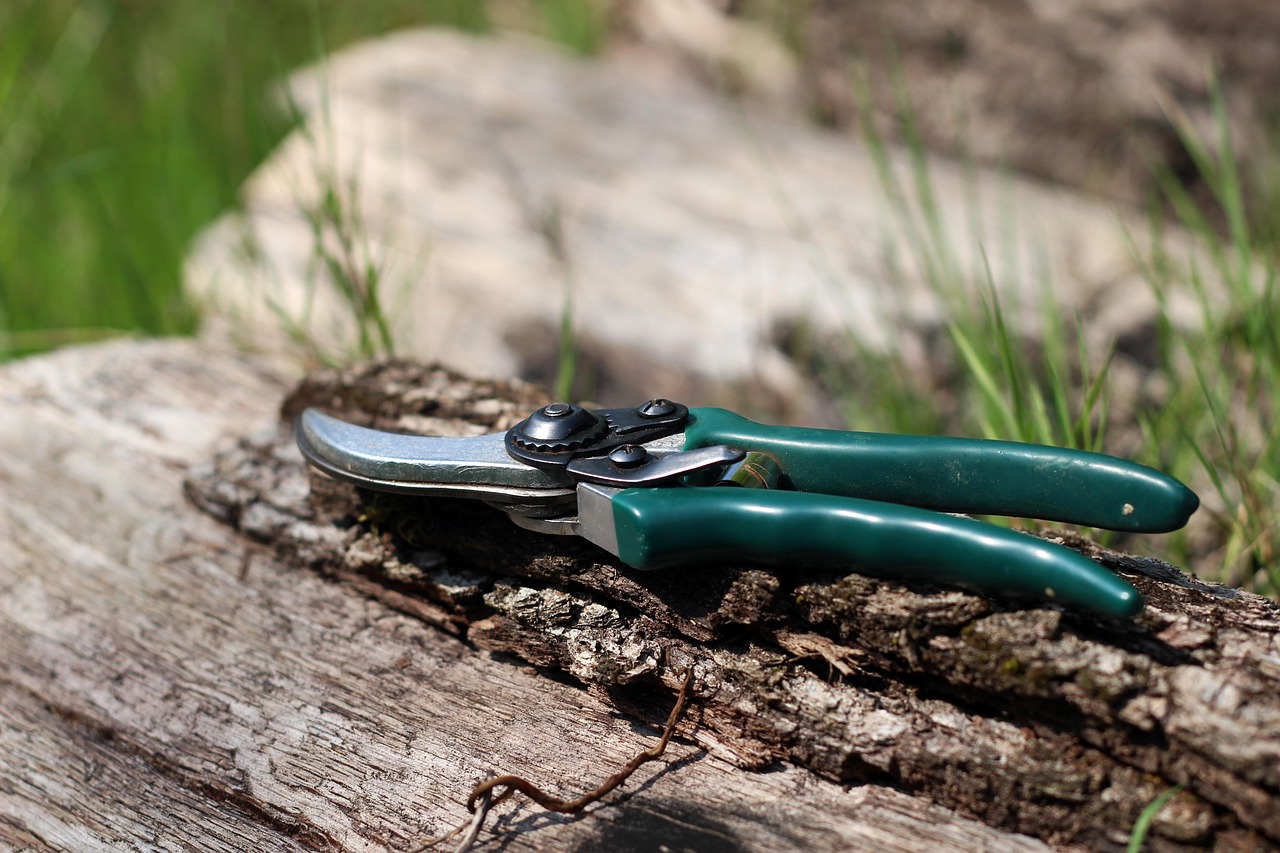Pruning lemon orchard trees effectively promotes larger citrus yields by improving air circulation, increasing sunlight exposure, and removing unproductive branches. Proper techniques enhance tree health and fruit quality while also facilitating easier maintenance and harvesting.
Lemon trees are a popular choice for both home gardeners and commercial orchards due to their fragrant blossoms and delicious fruit. However, to achieve optimal growth and yield, regular pruning is essential. Many growers underestimate the importance of this practice, but with the right techniques, one can significantly enhance the productivity of their lemon trees.

Understanding the basics of lemon tree pruning is crucial. Pruning not only shapes the tree but also encourages better fruit production. When done correctly, it can lead to healthier trees with stronger branches that support more fruit. This article will explore the various aspects of lemon orchard tree pruning, from timing to techniques, and the benefits of proper maintenance.
Why Prune Lemon Trees?
Pruning serves several key purposes in maintaining a healthy lemon orchard. These include:
- Improving Air Circulation: Removing excess foliage allows for better airflow through the tree, reducing the risk of fungal diseases.
- Enhancing Sunlight Exposure: Pruning opens up the canopy, ensuring that sunlight reaches all parts of the tree.
- Removing Dead or Diseased Wood: Cutting away unhealthy branches prevents the spread of diseases and pests.
- Encouraging New Growth: Pruning stimulates the growth of new shoots that can produce more fruit.
- Shaping the Tree: A well-shaped tree is easier to manage and harvest.
In addition to these benefits, regular pruning helps to maintain the overall structure of the tree. A well-maintained lemon tree can produce more fruit over its lifetime compared to one that is neglected.

Best Time to Prune Lemon Trees
Timing is crucial when it comes to pruning lemon trees. The ideal time for pruning varies depending on the climate and specific variety of lemon trees. Generally, the following guidelines apply:
| Region | Best Time to Prune |
|---|---|
| Tropical Climates | Late Winter to Early Spring |
| Temperate Climates | After Harvest (Late Winter) |
In tropical regions, pruning can occur during the late winter or early spring. This timing allows the tree to recover and grow new shoots before the heat of summer. In temperate regions, it is advisable to prune after the harvest in late winter. This method ensures that the tree is not stressed and can focus on producing fruit in the coming growing season.
Essential Pruning Techniques
Employing proper pruning techniques is critical to achieving the desired results. Here are some effective methods:

- Crown Thinning: This technique involves selectively removing branches to open up the canopy. It enhances light penetration and air circulation.
- Crown Raising: Removing lower branches encourages upward growth and makes harvesting easier.
- Crown Reduction: This method reduces the overall size of the tree, making it more manageable without sacrificing fruit production.
When pruning, it is essential to use clean, sharp tools to make precise cuts. This practice minimizes damage to the tree and promotes quicker healing. Additionally, avoid cutting too much at once; it is better to prune gradually to prevent shocking the tree.
Common Mistakes in Pruning
Even experienced growers can make mistakes when pruning lemon trees. Here are some common pitfalls to avoid:
- Over-pruning: Removing too many branches at once can stress the tree and reduce yield.
- Poor Timing: Pruning at the wrong time can hinder growth and fruit production.
- Navigating Disease: Failing to remove diseased branches can lead to further issues within the orchard.
Avoiding these mistakes will ensure that your lemon trees thrive and produce a bountiful harvest. By understanding when and how to prune, growers can maximize their citrus yields effectively.

Tools and Equipment for Pruning Lemon Trees
Using the right tools is crucial for effective pruning. Proper equipment not only ensures cleaner cuts but also enhances safety and efficiency. Here are some essential tools for pruning lemon trees:
- Pruning Shears: Ideal for small branches and fine twigs, these should be sharp and comfortable to use.
- Loppers: Useful for thicker branches, loppers offer greater leverage and reach compared to shears.
- Saws: For larger branches, a hand saw or a pruning saw can make the job easier.
- Hedge Trimmers: These can be used for shaping and thinning larger trees when necessary.
- Gardening Gloves: Protect your hands while working with sharp tools and thorny branches.
Before starting the pruning process, ensure that all tools are clean and sterilized. This practice helps prevent the spread of diseases from one tree to another.
Understanding Tree Structure
A good understanding of the tree’s structure can enhance the effectiveness of pruning. Here are key components of lemon tree anatomy to consider:
| Tree Component | Description |
|---|---|
| Trunk | The main support of the tree that transports nutrients. |
| Main Branches | These support the smaller branches and leaves. |
| Fruit-bearing Branches | Smaller branches where flowers and fruit develop. |
| Leaves | Essential for photosynthesis, providing energy to the tree. |
Recognizing these components aids in making informed decisions during pruning. Focus on maintaining a balance between removing excessive growth while preserving the structure that supports fruit production.
Pruning Techniques for Different Growth Stages
Lemon trees go through various growth stages, each requiring different pruning approaches. Here are techniques tailored to specific stages:
Young Trees
For young lemon trees, the goal is to establish a strong framework. Consider the following:
- Selective Pruning: Remove any competing central leaders to encourage a single dominant trunk.
- Formative Pruning: Shape the tree to develop a well-balanced canopy with evenly spaced branches.
- Remove Suckers: Eliminate any shoots growing from the base or roots to direct energy toward growth above ground.
Mature Trees
Mature lemon trees require maintenance pruning to sustain health and productivity. Focus on:
- Thinning: Remove older, unproductive branches to promote airflow and light penetration.
- Dead Wood Removal: Cut away any diseased or dead branches to prevent the spread of disease.
- Crown Management: Maintain an open crown to ensure that sunlight reaches all parts of the tree.
Overgrown Trees
If a lemon tree has become overgrown, more drastic measures may be necessary. Follow these guidelines:
- Rejuvenation Pruning: Aim to cut back excessive growth significantly, focusing on older wood to stimulate new growth.
- Gradual Reduction: Avoid heavy pruning in one go. Instead, reduce size gradually over several seasons.
- Cautious Assessment: Always evaluate how much to remove based on the tree’s health and age.
The Role of Fertilization in Pruned Trees
After pruning, it is essential to support the tree’s recovery and growth through proper fertilization. Pruned lemon trees benefit greatly from additional nutrients. Consider these aspects:
- Nitrogen-Rich Fertilizers: These promote new growth after pruning, helping the tree recover.
- Slow-Release Fertilizers: They provide a steady supply of nutrients over time, reducing the risk of nutrient burn.
- Organic Options: Compost or well-rotted manure can improve soil quality while providing necessary nutrients.
Applying fertilizer after pruning ensures that the tree has the resources it needs to produce healthy foliage and fruit in the coming season. Always follow manufacturer guidelines for application rates and timing to avoid over-fertilization.
Pest and Disease Management Post-Pruning
After pruning, trees may be more vulnerable to pests and diseases. It is essential to monitor your lemon trees regularly for signs of issues. Here are some key strategies for managing potential threats:
- Inspect Regularly: Look for signs of pests such as aphids or scale insects that might infest pruned branches.
- Pest Control Measures: Use organic insecticides or introduce beneficial insects like ladybugs to control pest populations naturally.
- Disease Prevention: Ensure proper sanitation by cleaning tools and removing debris from around the trees to minimize disease risk.
A proactive approach will help keep your lemon orchard healthy and thriving after pruning, ensuring that your efforts lead to larger citrus yields in the future.
Understanding Lemon Tree Growth Cycles
To optimize pruning practices, it is essential to understand the growth cycles of lemon trees. Knowing when the tree is actively growing or resting can influence your pruning strategy significantly. Lemon trees generally experience distinct phases throughout the year:
| Growth Phase | Description | Pruning Recommendations |
|---|---|---|
| Active Growth | Typically occurs in spring and summer when the tree produces new leaves and branches. | Minimal pruning; focus on light maintenance and removing dead or damaged wood. |
| Flowering and Fruit Set | This phase happens in late spring to early summer with the formation of blossoms and initial fruit development. | Avoid major pruning to prevent stress during this critical period. |
| Resting Period | Generally in late fall and winter when growth slows down significantly. | Best time for significant pruning, as the tree can recover before spring growth resumes. |
By aligning pruning activities with these growth phases, you can ensure that your lemon trees remain healthy and productive throughout their life cycle.
Strategies for Maximizing Citrus Yields
Beyond pruning, several strategies can enhance citrus yields in lemon orchards. These strategies focus on improving overall tree health and productivity:
Soil Health Management
The foundation of a productive lemon orchard is healthy soil. Here are some strategies to consider:
- Soil Testing: Conduct regular soil tests to determine nutrient levels and pH balance. This helps in applying the right amendments.
- Organic Matter Addition: Incorporate compost or organic fertilizers to improve soil structure and nutrient availability.
- Mulching: Use organic mulch around the base of the trees to retain moisture and suppress weeds.
Irrigation Practices
Irrigation plays a crucial role in the health of lemon trees. Appropriate water management can enhance fruit quality and yield:
- Drip Irrigation: Implementing a drip irrigation system delivers water directly to the root zone, minimizing evaporation and runoff.
- Irrigation Scheduling: Monitor weather conditions and adjust watering schedules accordingly. Overwatering can lead to root rot, while underwatering can stress the tree.
- Water Quality: Ensure that irrigation water is free from contaminants that could harm tree health.
Choosing the Right Lemon Varieties
The choice of lemon variety can greatly influence the yield and quality of fruit. Some varieties are more resilient to diseases or better suited for specific climates. Here are popular lemon varieties to consider for your orchard:
| Lemon Variety | Description | Best Uses |
|---|---|---|
| Eureka | A common commercial variety with high acidity, producing fruit year-round. | Fresh consumption, cooking, and juicing. |
| Lisbon | Similar to Eureka, Lisbon lemons have a thicker skin and are also productive year-round. | Ideal for juicing and culinary uses. |
| Meyer | A sweeter hybrid between a lemon and a mandarin, with a thinner skin. | Great for desserts, marinades, and beverages. |
When selecting lemon varieties, consider local climate conditions, disease resistance, and market preferences. This decision impacts not only yield but also the quality of fruit produced.
The Importance of Pollination
Pollination is a crucial factor influencing lemon yield. While lemon trees can produce fruit without cross-pollination, enhancing pollination can lead to larger and more abundant fruit. Here are ways to improve pollination in your orchard:
- Planting Companion Flowers: Include flowering plants nearby to attract bees and other pollinators which can enhance fruit set.
- Avoiding Pesticides: Limit pesticide use during flowering periods to protect beneficial insects essential for pollination.
- Hand Pollination: In smaller orchards or gardens, consider hand-pollinating flowers during peak bloom if natural pollinators are scarce.
A healthy pollination environment contributes significantly to fruit quality and quantity, making it an essential part of citrus management in lemon orchards.
Seasonal Care After Pruning
The care of lemon trees does not end with pruning. Seasonal attention is vital for maintaining tree health and maximizing yields:
- Spring Care: Monitor new growth for pests and diseases. Fertilize appropriately as needed.
- Summer Care: Ensure consistent watering during dry spells. Mulch to conserve moisture and suppress weeds.
- Fall Care: Prepare trees for dormancy by ensuring they have adequate nutrients. Clean up fallen leaves and debris to prevent disease.
- Winter Care: Protect trees from frost by covering them if necessary. Continue monitoring for pests that may become active in warmer spells.
Caring for your lemon orchard year-round will help ensure that your trees remain productive, healthy, and capable of delivering larger citrus yields season after season.
Common Challenges in Lemon Orchard Management
Managing a lemon orchard comes with its unique set of challenges. Understanding these issues can help growers take proactive measures to mitigate risks and ensure healthy, productive trees. Some common challenges include:
- Pest Infestations: Aphids, spider mites, and whiteflies are common pests that can harm lemon trees. Regular monitoring and integrated pest management strategies can help control these populations.
- Diseases: Fungal diseases such as powdery mildew and root rot can severely impact tree health. Implementing good sanitation practices and proper watering techniques can reduce disease incidence.
- Climate Variability: Extreme weather conditions like droughts or unexpected frosts can stress lemon trees. Utilizing protective measures, such as frost blankets, and implementing efficient irrigation can help mitigate these effects.
- Soil Degradation: Continuous cultivation without proper soil management can lead to nutrient depletion. Regular soil testing and amendments are crucial for maintaining soil health.
Addressing these challenges requires consistent effort and knowledge about lemon tree care. Growers should stay informed about the latest practices and technologies in citrus management to enhance their orchard’s resilience.
Innovative Techniques in Pruning and Care
As agriculture evolves, so do the techniques for managing lemon orchards. Innovative approaches can lead to improved yields and healthier trees. Some notable techniques include:
- Precision Agriculture: Utilizing technology such as drones and sensors can help monitor tree health, soil moisture levels, and pest activity more effectively.
- Regenerative Practices: Emphasizing soil health through cover cropping and reduced tillage helps build organic matter, leading to improved tree vitality.
- Integrated Pest Management (IPM): This holistic approach combines biological control, habitat management, and chemical methods to manage pests effectively while minimizing environmental impact.
- Smart Irrigation Systems: Implementing automated irrigation systems that adjust based on weather conditions can enhance water use efficiency and promote optimal growth.
By adopting these innovative practices, lemon orchard growers can boost productivity while ensuring sustainability in their operations.
Community Involvement and Education
Community involvement plays a vital role in successful lemon orchard management. Engaging with local agricultural programs, attending workshops, and joining farming cooperatives can provide valuable resources and support. Knowledge sharing among growers fosters innovation and helps address common challenges more effectively.
Participating in local agricultural fairs or citrus festivals can also promote the benefits of lemon cultivation and foster community interest in sustainable practices. Collaborative efforts within the farming community enhance both individual grower success and the overall health of the local agricultural ecosystem.
Final Thoughts
In conclusion, effective lemon orchard tree pruning is a multifaceted practice that significantly influences citrus yield. By understanding the fundamentals of pruning, seasonal care, pest management, and innovative techniques, growers can create an environment where their lemon trees thrive. Regular attention to tree health, soil quality, and pest control will ensure that lemon orchards remain productive for years to come.
The journey of cultivating a thriving lemon orchard requires patience, knowledge, and dedication. As growers implement the strategies outlined in this article—from pruning techniques to seasonal care—they will not only enhance the health of their trees but also enjoy bountiful harvests of delicious lemons. With proper care and management, the potential for larger citrus yields is within reach for every lemon orchard grower.
